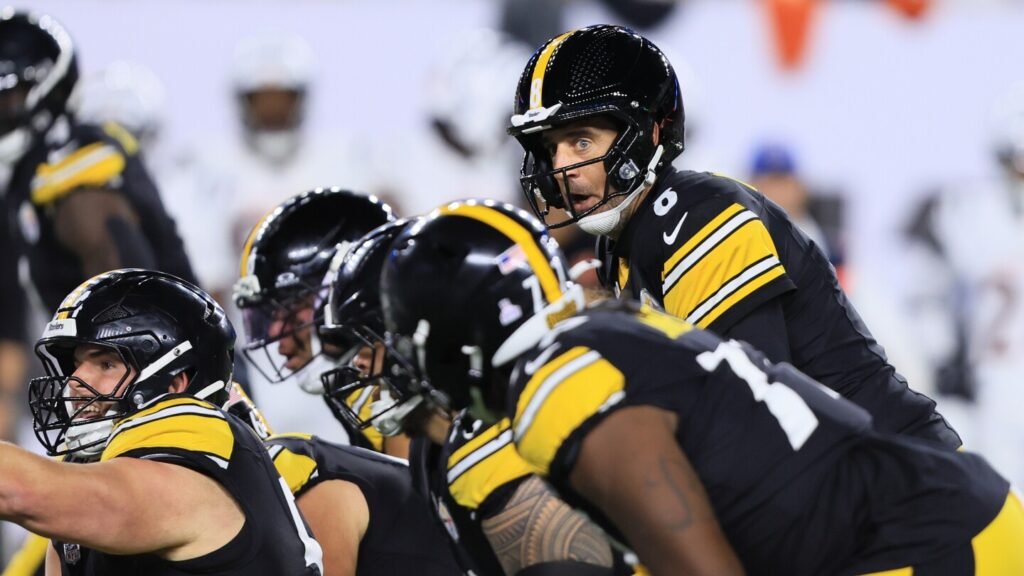A variety of factors have combined to make NFL games that would otherwise feel like they’re over not really over. Until they’re over.
After the Bengals kicked the go-ahead field goal against the Steelers on Thursday night, the game definitely was not over.
In past years, probably. This year, three things have adjusted that presumption: (1) the latest changes to the kickoff procedures; (2) the emergence of kickers with ranges approaching Gus the donkey; and (3) the revamped K ball procedures.
That’s what made receiver Tee Higgins’s widely-praised decision to eschew a touchdown and take a knee at the Pittsburgh seven not quite the no-brainer it was described to be. With 1:39 to play, the Bengals had to bleed the clock (quarterback Joe Flacco wisely burned extra ticks prior to taking knees) before kicking the field goal.
Seven seconds remained on the clock.
The game was not over.
First, the Bengals had to make a decision regarding the kickoff. The best outcome would have been a “dirty ball” kick that skittered into the end zone without being returned. That would have put the Steelers at the 20. (The risk was missing the landing zone and giving Pittsburgh the ball at its 40.) The second best outcome would have been to place the kick between the five and the goal line, forcing the Steelers to return the ball — and to lose precious seconds while doing so. (Yes, there would have been a small risk of a kickoff return for a touchdown.)
The Bengals opted to kick into the end zone. Which gave the Steelers the ball at their own 35. Which put them 13 yards away from an opportunity for kicker Chris Boswell to attempt a 70-yard field goal to win the game.
Five years ago, that scenario justifiably would have prompted guffaws. Today, it’s more than plausible.
Rewind to Week 1. Boswell won the game against the Jets, 34-32, with a 60-yard field goal that would have been good from at least 70 yards.
One play. One pass. Thirteen yards. In six seconds or less.
The Steelers didn’t try to set up the kick, for reasons not currently known. Instead, quarterback Aaron Rodgers threw to tight end Pat Freiermuth for a five-yard gain, taking four seconds to do so. Which gave the Master of the Hail Mary a non-zero chance to win the game with another ICBM to the end zone.
Which is exactly what Aaron Rodgers did.
The ball had a chance. It was delivered to the end zone. The Bengals made a great play on the ball to save the victory.
So, no, the game was not over when the Bengals took a 33-31 lead. The Steelers had a chance to get the ball to their own 48, which would have given a chance for Boswell to try a potential walk-off, 70-yard, game-winning field goal. They ultimately rolled the dice on a repeat of the Rodgers-to-Rodgers Hail Mary that propelled the Packers past the Lions on a Thursday night nearly 10 years ago.
While the Bengals escaped with a win, the broader takeaway is this: We all need to adjust our thinking about when a game is truly over after a late score. If a field goal is needed to win the game or force overtime, it doesn’t take much time to create the chance to try.
And when the quarterback is Rodgers, there’s always a chance he’ll nail another Hail Mary.
Read the full article here














